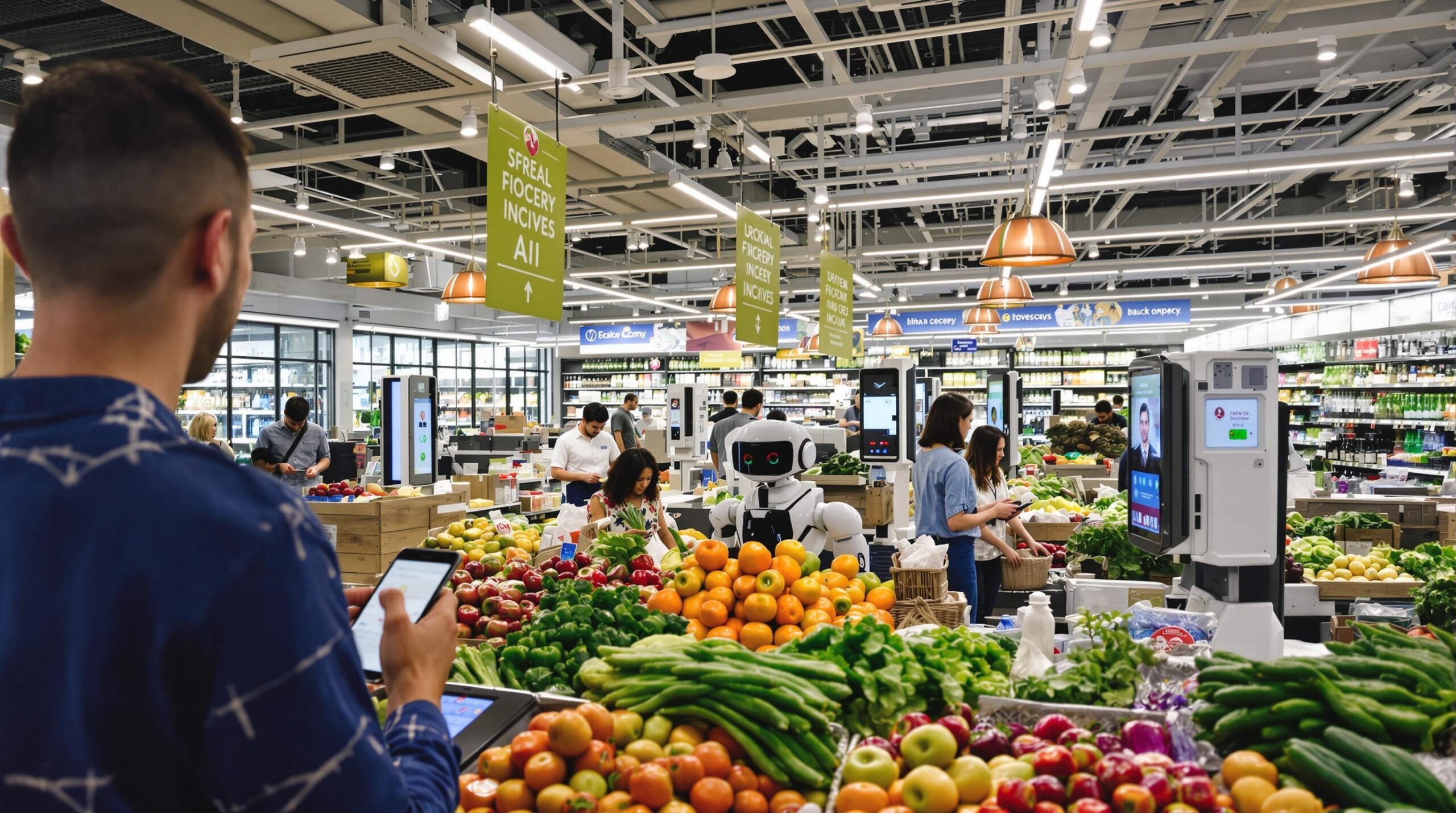Artificial intelligence (AI) continues to revolutionize many industries, and grocery retail is no exception. AI-driven grocery stores are transforming traditional shopping experiences. These technological advancements focus on convenience, efficiency, and customer satisfaction. Shoppers can now enjoy a faster, smarter, and more personalized trip to their local grocery store.
Streamlined Checkout Processes
Waiting in long checkout lines often frustrates shoppers. AI-powered grocery stores have eliminated this hassle. Smart sensors and cameras track the items customers select in real-time. Payment processes automatically complete as the shopper exits the store. Amazon Go pioneered this model, inspiring retailers worldwide to follow suit. Shopping feels seamless and stress-free, creating more positive experiences.
Personalized Shopping Recommendations
Artificial intelligence analyzes vast amounts of customer data. It evaluates buyers’ purchase history, preferences, and even dietary restrictions. The system then delivers customized suggestions specific to individual needs. Shoppers receive product recommendations through apps, digital kiosks, or in-store screens. These tailored offers encourage smarter, healthier choices and introduce new products efficiently.
Dynamic Inventory Management
Stockouts and overstocking challenge traditional grocery retailers. AI-driven stores use advanced algorithms to monitor and manage inventory. Real-time sensors and analytics systems track product movement on shelves. Managers receive timely alerts when stock levels drop or items expire. Automation improves restocking efficiency and ensures that shelves remain full with fresh products.
Enhanced In-Store Navigation
Large grocery stores can overwhelm customers searching for specific items. AI-powered navigation tools guide shoppers efficiently. Interactive maps pinpoint product locations using mobile apps or in-store devices. Voice assistants offer step-by-step directions or categorize grocery lists automatically. Finding items quickly helps buyers save time and feel more confident during their visit.
Touchless Shopping for Hygiene and Safety
Pandemic concerns have heightened awareness of hygiene and public safety. AI-driven grocery stores introduce touchless technologies to address these needs. Shoppers can scan items with their smartphones or use automated checkout systems. Contactless payment terminals minimize physical interaction, reducing the risk of spreading germs. These measures not only improve safety but also enhance peace of mind during shopping trips.
Real-Time Price and Promotion Adjustments
Dynamic pricing strategies are gaining popularity in grocery retail. AI analyzes demand, competition, and expiration dates to determine optimal prices. Digital price tags allow instant updates in response to promotions or inventory changes. Shoppers benefit from timely discounts while stores can reduce food waste and maximize revenue. Both parties gain from a more adaptive and competitive pricing model.
Predictive Analytics for Demand Forecasting
Accurate demand forecasting presents a critical advantage for grocery businesses. AI analyzes shopping patterns, seasonal trends, and external factors to predict which products will sell. Stores can prepare for peaks in demand, holidays, or changing customer preferences. As a result, they minimize stockouts, reduce overstock, and improve supplier relationships.
Automated Restocking and Supply Chains
AI-driven systems also streamline grocery supply chains. Automated alerts signal suppliers when products run low. Drones and robots assist with transporting goods and replenishing shelves. Reduced human error and faster restocking keep the store operational around the clock. This automation supports a consistent shopping experience and helps meet consumer expectations year-round.
Improved Customer Service With AI Assistants
AI-powered virtual assistants enhance in-store customer service. These bots answer product questions, locate items, and offer promotional details around the clock. Shoppers can interact through mobile apps or store kiosks. The experience feels more responsive, welcoming, and informative. Staff can focus on complex tasks while still ensuring customers receive personalized support.
Optimizing Store Layouts and Operations
Artificial intelligence enables retailers to analyze customer flow and behavior. Heat maps and data analytics reveal popular footpaths and dwell times. Stores can adjust layouts, displays, and promotions based on this feedback. A smarter organization maximizes efficiency and sales while delivering a more convenient and enjoyable shopping environment for customers.
Strengthening Sustainability and Reducing Food Waste
Sustainability gains critical importance in grocery retail operations. AI helps stores monitor expiry dates, consumption patterns, and procurement schedules. Predictive analytics ensures products are purchased and displayed before they spoil. Surplus foods can be donated or marked down promptly, supporting waste reduction and local communities. AI-driven stores make it easier for shoppers to support sustainable practices.
Challenges and Considerations
Despite many advantages, AI-driven grocery stores must address privacy and data security concerns. Transparent data collection policies help build consumer trust. Automation could impact employment, which requires thoughtful transition strategies for affected workers. Retailers should invest in robust cybersecurity and employee retraining to overcome these challenges.
The Human Touch in a Digital World
Technology will not fully replace human interactions in grocery stores. Shoppers still value friendly staff for assistance and personal engagement. AI-driven systems complement, rather than replace, the human element. Effective hybrid models blend digital innovation with attentive customer service. This balance sets the foundation for a more enjoyable and supportive retail environment.
The Future of AI in Grocery Retail
AI-driven grocery stores are only at the beginning of their journey. Ongoing advances in machine learning, robotics, and IoT will drive further breakthroughs. From predictive analytics to robot-assisted shopping, the possibilities continue to expand. Retailers investing in AI will shape the future of grocery shopping for years to come.
Conclusion
AI-driven grocery stores offer more than just efficiency. They transform shopping into an experience defined by convenience, personalization, and sustainability. Shoppers benefit from faster checkouts, targeted recommendations, and cleaner environments. Behind the scenes, AI-powered operations maximize efficiency and minimize waste. As these innovations take root, the future of grocery shopping looks smarter, simpler, and more satisfying for everyone.

